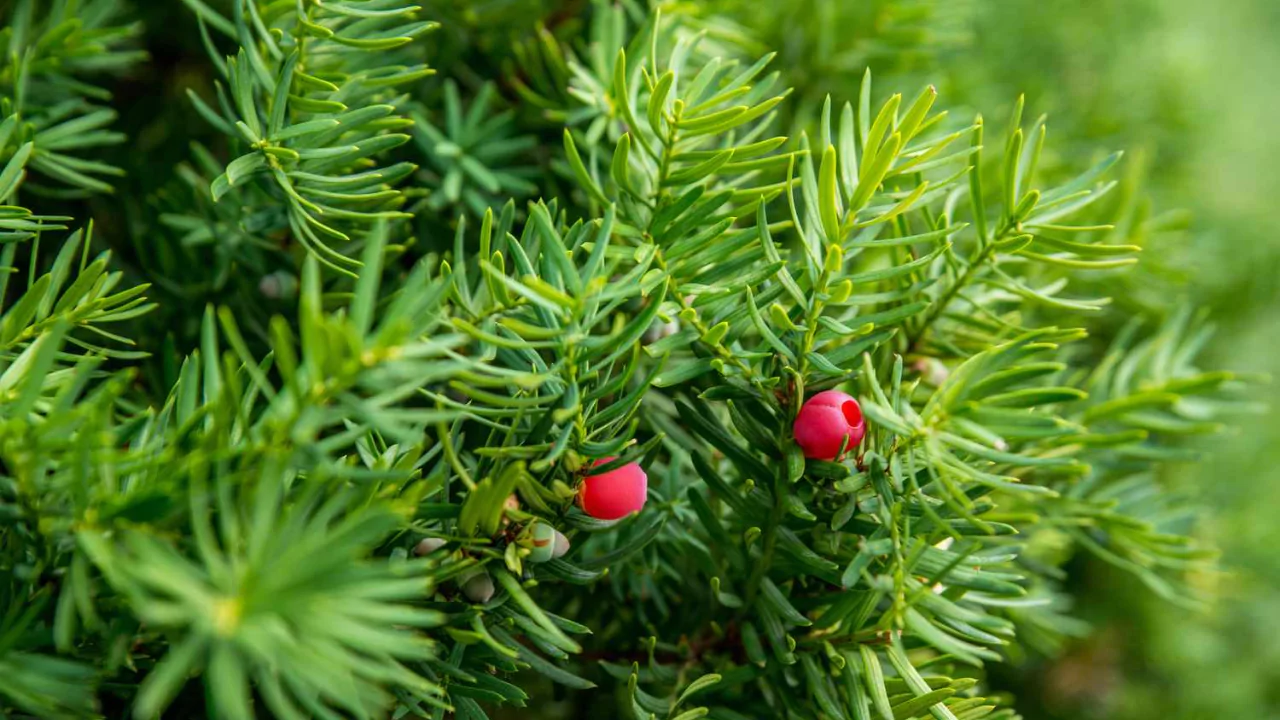
Japanese yews (Taxus cuspidata), native to Japan and Korea, first arrived in North America through the efforts of George R. Hall. Since that initial introduction, a number of cultivars have been developed and propagated.
All yews, however, retain a common characteristic: their foliage and seeds are highly poisonous to humans and a wide range of animals, including canines, cattle, and equines. Historically in England, the species was permitted only within churchyards fenced to exclude livestock, a precaution that underscores its toxic nature. Homeowners with children or livestock are advised to avoid planting these shrubs.
Taxus cuspidata is classified as a conifer, though it does not produce cones; rather, female specimens bear fleshy, red arils. The plant’s versatility allows it to serve several roles in the landscape. Compact cultivars can provide an attractive, low-growing ground cover, slowly expanding to suppress competing weeds.
Small specimens are effective on slopes, directing rainfall to reduce erosion, or can be encouraged to cascade over walls and in rock gardens. Larger varieties serve as striking focal points in more formal settings; they can be pruned selectively to maintain a desired size and shape, or sheared for a more uniform, tidy appearance.
Planting Japanese Yews
Japanese yews exhibit a level of cold hardiness that exceeds that of many evergreen shrubs, flourishing throughout U.S. Department of Agriculture plant hardiness zones 4 to 7. To establish these shrubs, use nursery propagations, commonly available as patented cultivars. Situate them in sites offering full sun to partial shade; in regions characterized by hot summers, a position receiving morning sun and afternoon shade is preferable.
For areas exposed to severe winter conditions, choose a sheltered location, such as a foundation side, a garden wall, or an assemblage of larger shrubs that can reduce wind exposure.
These yews thrive in light-textured, acidic soils, and they exhibit poor tolerance to heavy clay that retains excess moisture. Prior to planting, incorporate organic amendments such as compost, well-composted manure, or peat moss to enhance porosity and drainage.
Should your substrate remain persistently wet or excessively heavy, evaluate the feasibility of constructing raised beds or, alternatively, select a different species better suited to those conditions.
Plant Japanese yews in spring. Excavate a hole that is equal in depth to the root ball and twice its width. Set the yew in the hole, verifying that it is vertical. Pour in some water until the hole is partially full, then add 2 gallons more. Allow this water to percolate, then backfill with soil, compressing it gently with your foot.
During the first season, water the yew weekly, increasing frequency in hotter or drier spells. Japanese yews dislike saturated soil yet suffer in extended drought. Maintain evenly moist soil for optimal growth.
Prune Japanese yews in spring or summer, removing deadwood and limiting overall size. In early spring, apply half a cup of 10-10-10 granular fertilizer around each plant. The species thrives at a soil pH between 6.0 and 6.5; lower pH levels may cause leaf chlorosis. To raise soil acidity, apply lime and incorporate it a full season before planting.
Pests and Problems
Japanese yews are most susceptible to root rot when planted in poorly drained soils. Select a site wisely and amend the planting medium, and root rot is usually preventable. The bark of Japanese yews is thin and easily bruised; injury to the bark can trigger dieback in the tissue just above the wound.
Scale, weevils and mealy bugs can infest Japanese yews, but the damage is rarely severe.
Cultivars Worth Trying
- ‘Capitata’ is really a tree, growing up to 50 feet tall with a conical form.
- ‘Densa’ is a low, spreading form that grows 4 feet tall and 8 feet wide.
- ‘Emerald Spreader’ grows only 2 ½ feet high, making it an ideal ground cover.
- ‘Nana’ has a low-growing, spreading form.
For more information about Japanese yews, visit the following links:
Yews from the Virginia Cooperative Extension
Yew Problems from the Missouri Botanical Garden
How to prune a Japanese Yew on YouTube.
Impact of Japanese Yew on Idaho Wildlife on YouTube.
Growing up, Julie Christensen absorbed the art of gardening on her grandfather’s Idaho farm and her mother’s tidy vegetable patch. Now settled on the high plains of Colorado, she cultivates her own patch of earth. When her hands are clean, she writes about food, education, parenting, and the quiet lessons of the garden.